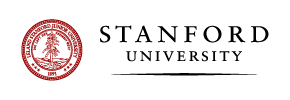
STANFORD UNIVERSITY: Cell Therapy Methods to Improve AML Patient Outcome Post Allo-HSCT
Year of Grant: 2015
Location: United States
For children in the United States, approximately 20% of newly diagnosed leukemia is AML, with this number rising to 50% during infancy and adolescence. And although many children with AML will achieve remission with conventional chemotherapy, only 20-40% of these will be long-term survivors.
Optimal treatment of pediatric AML patients is allogeneic hematopoietic stem-cell transplantation (allo-HSCT), which produces the GvL effects derived from T cells present in the donor graft. However, success requires an intact GvL response and no severe GvHD. The combination of these key features has been a major challenge. There is a critical need for improvements to established HSCT treatment regimens that reduce GvHD toxicity and maintain GvL effects.
This study seeks to integrate cutting edge gene therapy approaches of Tr1 cell generation to identify combinatorial methods that have a transformative influence on the long-term effectiveness and health of pediatric AML patients receiving allo-HSCT treatments. It will investigate how Tr1 cells recognize myeloid blasts, which may help distinguish the mechanisms of GvHD and GvL, as well as identify target markers that could allow application of Tr1 cells to treat other hematological malignancies.
If successful, this study will shorten and pave the way for an optimized Tr1-cell based clinical therapeutic protocol for allo-HSCT in pediatric AML patients to ensure an increased cure rate for pediatric AML patients; this could also be extended to adult AML.
RTFCCR ACTIVE GRANTS
AUSTRALIA
EL SALVADOR
-
Cleveland Clinic Foundation, 2017
ISRAEL
SINGAPORE
SWITZERLAND
UNITED KINGDOM
-
University of Cambridge, 2015
-
University of Edinburgh, 2015
UNITED STATES
